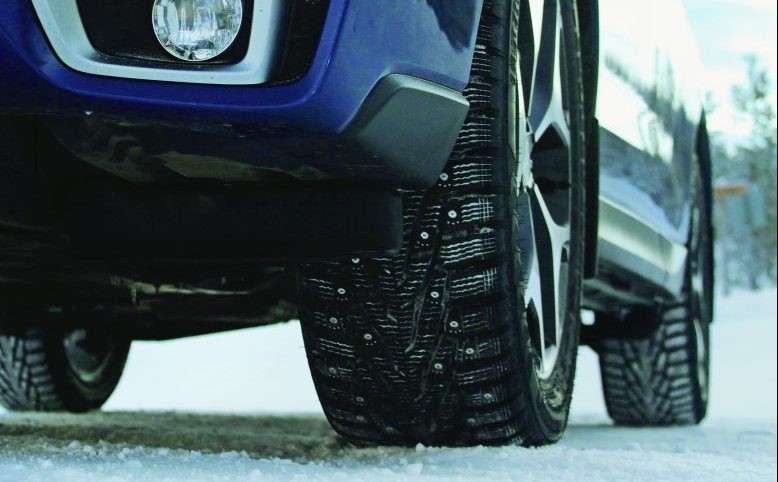Driving on icy roads is hazardous, even if your car is equipped with winter tires. For extra traction in winter driving conditions, some drivers use studded tires. Here’s what you should know about them.
What are studded tires?
Studded tires have small metal studs that protrude a fraction of an inch from the tire. The studs claw into frozen precipitation on roadways, thereby improving traction.
How are tire studs installed?
Tire studs can only be installed on “studdable” tires. These tires with stud holes into which studs can be either screwed or snapped, depending on the tire model. In most cases, the studs need to be snapped into place with a stud gun. Most tire shops are able to perform stud installations.
Note that stud sizes vary, and you’ll need to select the correct stud size for your tire model.
Studded tires increase your car’s traction on icy roads. When drivers accelerate, brake, or turn on ice or hard-packed snow, the studs work in conjunction with the winter tire tread to improve the car’s handling.
There are, however, a few drawbacks to studded tires. For one thing, when the road isn’t icy or snowy the studs will decrease traction, as the tire tread won’t adhere to the road as well. In addition, they can produce additional road noise and take a toll on paved roads, as studded tires wear down the pavement at a higher rate than normal winter tires.
If you plan to use studded tires, make sure you get the studs removed when spring arrives. In fact, in most states, there’s a specific time frame (usually encompassing five to seven months) during which the use of studded tires is permitted. Also note that there are some states, such as Wisconsin, Minnesota, and Illinois, where the use of studded tires is prohibited.

